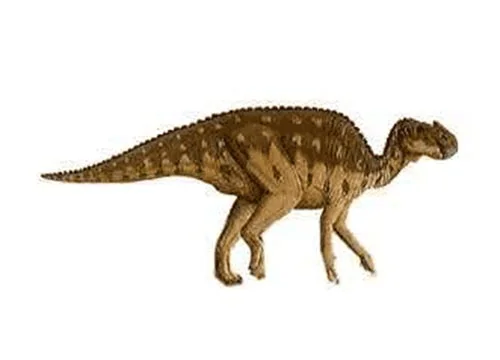Aralosaurus (Aral lizard - after the Aral sea)

Ah-ral-o-sore-us
Anatoly Konstantinovich Rozhdestvensky - 1968
Herbivore
Estimated 8 meters long
Euornithopod
A. tuberiferus (type)
Kazakhstan
Late Cretaceous, 94-84 million years ago
Aralosaurus Facts
Aralosaurus is a dinosaur genus that was first discovered in the late 1970s in the Aral Sea region of Kazakhstan. The genus contains two species, Aralosaurus tuberiferus and Aralosaurus kozlovi. These species lived during the Late Cretaceous period, approximately 70 to 65 million years ago.
Aralosaurus was a herbivorous dinosaur, belonging to the Hadrosaurid family, also known as the “duck-billed dinosaurs.” Based on the fossils found, it is estimated that Aralosaurus was about 8 to 9 meters long and weighed between 3 to 4 tons. It had a wide, flat head with a distinct beak, used for cropping vegetation, and a long, bony crest on its head, which is thought to have been used for display and communication.
One of the interesting features of Aralosaurus is its dentition. Unlike other Hadrosaurids, Aralosaurus had complex teeth arrangements, with multiple rows of teeth and various shapes and sizes. This allowed it to process tough plant material efficiently and grind it up into a more digestible form.
In terms of geographical distribution, Aralosaurus fossils have been found in the Aral Sea region of Kazakhstan and in the neighboring regions of Uzbekistan. This indicates that the Aral Sea was once a thriving ecosystem, home to a diverse range of flora and fauna.
Aralosaurus is a significant dinosaur genus for several reasons. Firstly, its discovery sheds light on the diversity of dinosaur fauna in the Late Cretaceous period in Asia. Secondly, it provides evidence of the presence of Hadrosaurids in this region, which was previously thought to be dominated by other dinosaur groups, such as the Tyrannosaurids and the Ankylosaurids. Finally, the complex teeth arrangements and the bony crest of Aralosaurus indicate that it had a unique ecology and adaptation to its environment.
In conclusion, Aralosaurus is a fascinating dinosaur species that provides valuable insights into the Late Cretaceous period in Asia and the evolution of Hadrosaurids. I hope this brief overview has sparked your interest in this amazing dinosaur genus, and I encourage you to learn more about its discovery, anatomy, and significance.



